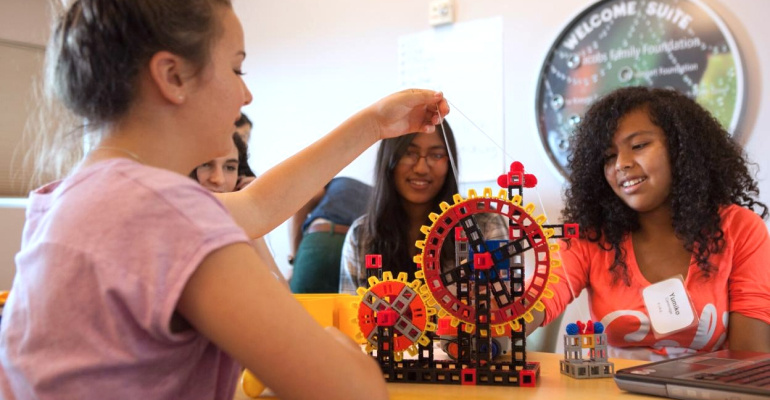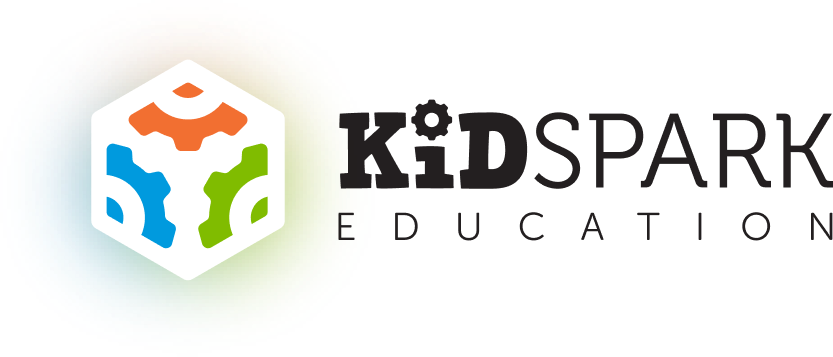
Engineering is more than just one of the primary subjects of STEM—it’s the building blocks of the world around us. For middle school students, learning about engineering can help connect the dots between the STEM concepts they learn in the classroom and its real-life applications.
To help students embrace STEM education, educators can utilize hands-on engineering activities, bringing about a physical manifestation of the core principles they are teaching. These projects can spark a lifelong STEM identity for students that follow them through their education and eventual careers.
Let’s break down three engineering activities for middle school students that can be brought into your STEM classroom.
Teaching Engineering Concepts for Middle School
Engineering leverages creative problem-solving to build structure, improve machinery, and design products, among other things. As a part of the Next Generation Science Standards, middle school engineering should take students through this process, from initially defining the criteria and constraints of a design problem and analyzing data from tests to developing a model for iterative testing.
Engineering complements the other subjects of STEM—science, technology, and mathematics. Science topics like physics are integral to engineering, and math is a huge part of the calculations that make engineering projects tick. Science and math can be considered the tools and structure that make up engineering.
When possible, STEM concepts should be introduced in a buildable manner, starting in elementary school as early as pre-kindergarten. Since engineering is the practical application of STEM concepts, middle school is a great time to dig deeper into engineering curricula, as the world around middle school students expands and they develop their own interests.
Engineering Design Process
During their middle school STEM education, students should become comfortable leveraging the engineering design process (EDP). The engineering design process is a series of steps engineers follow as they create products and processes.
At its most basic, the engineering design process includes the following steps:
- Ask: Identify the Challenge
- Research: Brainstorm Ideas & Solutions
- Imagine: Build a Prototype
- Improve: Test & Improve The Design
- Demonstrate: Explain The Design
The engineering design process encourages open-ended thinking and creative problem-solving, skills which can in turn be applied to other subjects in STEM and beyond.

3 Engineering Projects for Middle School Students
Below we outline three hands-on engineering projects for middle school students. For more STEM projects, read our full list of twelve hands-on middle school STEM activities here.
1. Create a Rube Goldberg Machine
In this activity from Teach Engineering, students will put together their knowledge of simple machines and explore physics at work by creating their own Rube Goldberg machines.
Students must follow the engineering design process to create their own Rube Goldberg machine, which can have a specific goal, like flipping a switch on or pushing a marble into a cup, or you can leave the project open-ended for the students to set their own purpose for the machine.
The materials used in creating the machine can be brought in by the students or provided by the teacher, and they can be as varied and unique as you’d like.
Middle school is a great time to introduce students to the potential challenges and failings that occur in certain aspects of STEM, such as the over-engineering of a simple task. By building their own Rube Goldberg, your students can experience a playful example of this real-life issue.
This lesson is also a great example of cross-curricular learning, encouraging students to tap into their own creativity and identity. Their final projects can be reflective of their unique interests and approaches to problem-solving.
Read the full lesson online here.

2. Redirect a Roadway
In this engineering project, students will develop a section of bridge roadway that can rotate 90 degrees on command utilizing the Spark:bit program and lab from Kid Spark Education. Students will use the Angle Sensor and serial monitor to observe real-time data that will be directly applied to the challenge.
This engineering project asks students to imagine that there is a unique bridge that features a section of roadway that can rotate 90 degrees. Vehicles can drive onto the roadway and it will rotate 90 degrees before the vehicle can drive safely to the other side.
Students should identify the challenge that, recently, the mechanical system that rotates the bridge stopped working, so the city is looking to install a new system that allows the bridge to function consistently well. Students will use the Kid Spark STEM Pathways Lab with the Spark:bit robotics controller to build and program their own design.
This engineering activity is closely tied to coding and robotics, which allows students to make connections between the different topics. Students follow the engineering design process to achieve their goal and refine their design.
Like all curricula from Kid Spark, this lesson is backed by extensive resources and supported with professional learning modules. Read the teacher lesson plan here and challenge packet here. To access all materials from Kid Spark Education including curricula and lesson plans, create a free online account.
3. Design a Crew Exploration Vehicle (CEV)
For this engineering project, your middle school students are challenged by the NASA Jet Propulsion Laboratory to design, build, test and improve a crew exploration vehicle (CEV) that will safely return toy astronauts to Earth.
According to NASA, “[the] Orion Multipurpose Crew Vehicle is designed to ride atop the agency's Space Launch System, or SLS, a new heavy-lift rocket in development.” Students will engineer their own version of the Orion CEV, test it, and refine the design.
This project brings engineering concepts to the exciting subject of space exploration. Students get hands-on experience with the engineering design process, as they identify the problem, build a prototype, test the design, and optimize the design. The students will have the goal of safely transporting two 2 cm tall astronaut figures as they drop their small-scale model of a CEV into a water basin.
Students will have to consider the following engineering principles when designing and testing their mode:
- Balance
- Center of mass
- Total mass
- Waterproofing
- Vehicle egress
This engineering lesson also includes thorough instructions and resources for teachers, such as the Orion fact sheet, CEV worksheet, and a plethora of videos of the tests that NASA conducts, including the vertical splash test video and swing drop test video.
Read the full engineering project from NASA here.

Engineering Activities and Lessons from Kid Spark Education
The middle school STEM program from Kid Spark provides integrated engineering challenges that give students hands-on experience with the essential engineering concepts they are learning in their STEM education. For educators, the Kid Spark programs make the process easy, as the curriculum, engineering materials and professional development are all included.
Our NGSS-aligned curriculum that students key STEM topics including engineering and beyond, such as mathematics, prototyping, robotics, and more.





